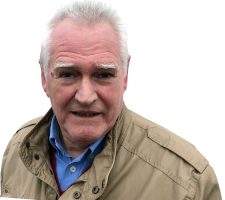search
date/time
 | Yorkshire Times Weekend Edition |

Mike Tilling
Arts Correspondent
7:14 AM 3rd July 2023
arts
Classical Music: Carl Nielsen
Nielsen
Symphony No 4 ‘Inextinguishable’; Violin Concerto
Bergen PHilharmonic Orchestra
Edward Gardner (conductor)
James Ehnes (violin)
Chandos CHSA 5311
https://www.chandos.net/home
Symphony No 4 ‘Inextinguishable’; Violin Concerto
Bergen PHilharmonic Orchestra
Edward Gardner (conductor)
James Ehnes (violin)
Chandos CHSA 5311
https://www.chandos.net/home

1) a light airy piece to settle the audience into their seats - Mendelssohn, Debussy, Ravel;
2) a heavy duty concerto using solo instruments ranging from a penny whistle to the double bass - Mozart, Bruch, Rachmaninov
3) gin and tonic
4) uplifting symphony to send the audience out into the night, possibly even humming a tune - Beethoven, Mahler, Haydn
5) encore (maybe)
More of this later.
Added vectors for programme planners circa 2024: where do we include a contemporary composer? What about a female composer? They can fit in under the headings given above, but who gets evicted to make way for them?
Nielsen’s Fourth Symphony is structured, traditionally enough, in four movements – Allegro; Poco allegretto; Poco adagio quasi andante; Allegro – but there is no pause for breath between any of them. In fact, there is little pause for breath even within each section. This appears to have been Nielsen’s overt aim in dubbing the piece ‘Inextinguishable’ – that is, a representation of the resilience and endurance of the human spirit. The lack of pauses represents the unstoppable momentum of man’s will to survive. You only need to look at the date of the first performance to see what must have been on Nielsen’s mind.
An early critic of Nielsen’s First Symphony suggested that listening to it was ‘like watching a child playing with dynamite’. The innocence, suggested by this comment, seems to have decayed into mere naivety, (or is it hubris?) since it is difficult to see how any piece of music could live up to the ‘Inextinguishable’ soubriquet.
The Violin Concerto, on the other hand, is far more modest.
There is a surprise element in not permitting a prelude to attune the audience’s ears, but the instant access to the heart of the concerto is certainly a grand gesture. The attack is immediate and James Ehnes’s violin is instantly in the stratosphere, but the tone lightens as the piccolos pick up the theme and contrast with the brass.
The whole concerto lacks the bombast of its accompanying symphony and, as it approaches a conclusion, even becomes playful with Ehnes stating a theme played as a jig that even approaches sweetness. The final note renders an emphatic full stop.
Perish the thought, but were I ever to be in a position to programme an evening of classical music, I might just put the Violin Concerto in at 2, but would find space for a Twenty First Century or female composer at 4.